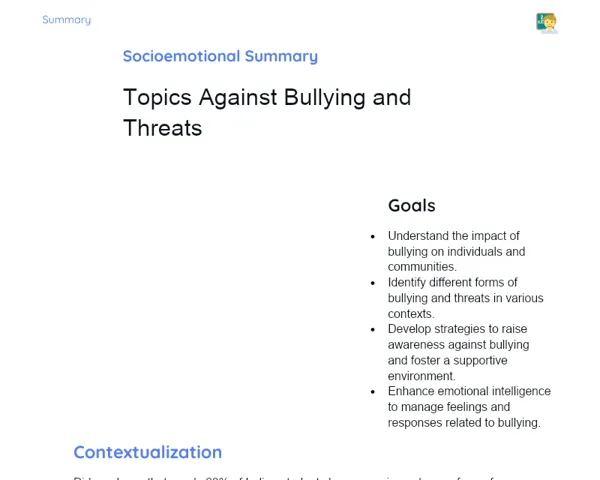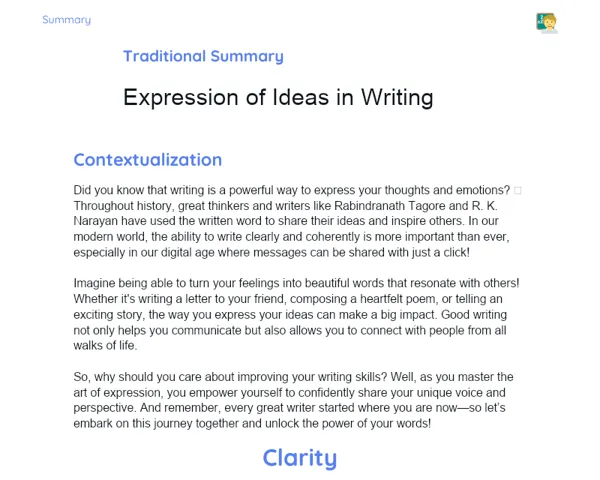## Goals
1. To enhance your ability to actively listen and decode the subtle nuances of conversations.
2. To develop critical thinking skills that help in interpreting underlying messages during dialogues.
3. To practice listening techniques that can improve comprehension and retention of spoken information.
Contextualization
Did you know that listening skills account for about 50% of effective communication? In a country as diverse as India, where multiple languages and dialects converge, mastering listening not only helps you understand the words being spoken but also the sentiments and emotions behind them. This skill is invaluable in everyday interactions, from casual chats with friends to formal discussions in the workplace.
Subject Relevance
To Remember!
Active Listening
Active listening is the cornerstone of effective communication. It goes beyond hearing the words spoken; it involves fully engaging with the speaker, understanding their message, and responding thoughtfully. This component signifies that you are not just a passive participant but an active contributor to the conversation. By employing techniques such as paraphrasing what the speaker has said or asking clarifying questions, you demonstrate that you value their input and are genuinely interested in their thoughts. In the rich tapestry of Indian conversations, where cultural nuances and emotions intermingle, being an active listener can deepen relationships and foster trust.
-
Engagement: Active listening requires you to be fully present in the moment, which can enhance the quality of interactions.
-
Empathy: By understanding the emotions behind the words, you can respond appropriately, showing compassion and care.
-
Feedback: Providing feedback during a conversation helps clarify misunderstandings and strengthens the connection between speakers.
Non-verbal Cues
Non-verbal cues are a critical aspect of communication that can convey more meaning than spoken words. These include facial expressions, gestures, posture, and eye contact. In Indian culture, for instance, a simple nod or a smile can signify agreement and understanding, while crossed arms might indicate defensiveness. Being aware of these signals allows you to interpret the speaker's unspoken emotions and intentions, aiding your overall comprehension. By honing this skill, you can better grasp the underlying sentiments and contexts of conversations, which is especially important in a diverse society where different cultural backgrounds may influence communication styles.
-
Interpretation: Understanding non-verbal signals can help you decode emotions and attitudes, leading to more effective responses.
-
Cultural Sensitivity: Different cultures express emotions uniquely; being aware of this can enhance cross-cultural communications.
-
Situational Awareness: Recognizing the context and environment can provide additional insights into the meaning behind the words.
Contextual Understanding
Contextual understanding refers to the ability to interpret spoken language within the frame of its surrounding circumstances, including cultural backgrounds, situational variables, and the relationship between speakers. This component is particularly relevant in a multicultural society like India, where conversations can be laden with local references and cultural allusions. By grasping the context in which a conversation takes place, you can uncover the 'why' behind what is being said, thus enhancing your overall comprehension and retention of information. It allows you to connect the dots and draw deeper meaning from dialogues, reinforcing the idea that effective listening is as much about context as it is about content.
-
Nuanced Understanding: Recognizing context enables you to decode layered meanings within conversations, from sarcasm to humor.
-
Relationship Dynamics: Understanding the relationship between speakers helps you gauge the tone and intent of the conversation more accurately.
-
Situational Awareness: Contextual understanding can prevent misinterpretations that may arise due to cultural differences or situational variables.
Practical Applications
-
In Job Interviews: Active listening can help you understand the interviewer’s questions and nuances better, leading to more informed responses.
-
In Group Discussions: Utilizing non-verbal cues and contextual understanding can facilitate smoother interactions and enhance collaborative efforts.
-
In Everyday Conversations: Applying these skills in casual settings can strengthen relationships with friends and family by fostering deeper connections.
Key Terms
-
Active Listening: A communication technique focused on understanding and responding to spoken words with concentration and engagement.
-
Non-verbal Cues: Signals communicate emotions and attitudes without using words, such as body language and facial expressions.
-
Contextual Understanding: The skill of interpreting dialogue within its situational and cultural context to gain deeper insights.
Questions for Reflections
-
How can developing your listening skills change your interactions with people from different cultural backgrounds?
-
In what situations have you found effective listening to positively impact your understanding of a conversation?
-
Reflect on a time when a misunderstanding occurred. How could better listening have altered the outcome?
The Listening Detective Challenge 🔍
In this challenge, you will become a 'Listening Detective'! Your task is to observe a conversation (this can be between friends, family, or even a video) and note the non-verbal cues, context, and emotional tones present. This will help you practice your active listening and contextual understanding skills!
Instructions
-
Choose a conversation to observe—this can be a live interaction or a recorded video.
-
Take notes on the non-verbal cues you observe (e.g., body language, gestures, facial expressions).
-
Pay attention to the context of the conversation (e.g., where is it happening? What are the relationships between speakers?).
-
After observing, write a brief summary (200-300 words) discussing what you perceived and how it enhanced your understanding of the conversation.



